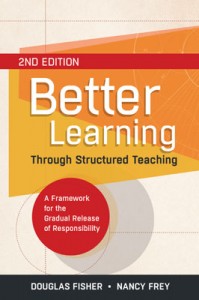Many teachers are participating in a higher-than-usual number of end-of-year in-service days, thanks to the need to make up a higher-than-usual number of snow days. Overheard at a recent workshop in which teachers were considering their first year with a new evaluation system:
“Whew, I’m sure glad that’s over! I guess we survived the year.”
“Yeah, it was pretty rough … I wonder if it will ramp up even more next year?”
“I don’t know, but I guess we should get ready. Maybe we should focus a little more on instruction …”
You think?
This is the stage many teachers and districts find themselves confronting — we’ve survived the first implementation year, we’re now getting pretty familiar with the evaluation model. Where do we go from here?
Focusing on instruction is exactly the right move, both from a practical and philosophical standpoint. For practical reasons, putting some energy into intentional design and improved instruction benefits teachers in terms of their evaluation ratings. More important is the impact it will have on students’ learning experiences.
A superb instructional model that pushes instruction to highly effective levels is the FIT Teaching™ model of gradual release of responsibility from Doug Fisher and Nancy Frey. Through an intentional process of focused instruction, guided instruction, collaborative learning and independent learning, teachers hand ownership of learning over to their students. In most evaluation models, this personalized and student-centered style of instruction results in effective and highly effective ratings.
So when reflecting on the school year, take a deep breath and think about getting FIT.*
*full disclosure: I am a member of the FIT Teaching expert cadre for ASCD.

